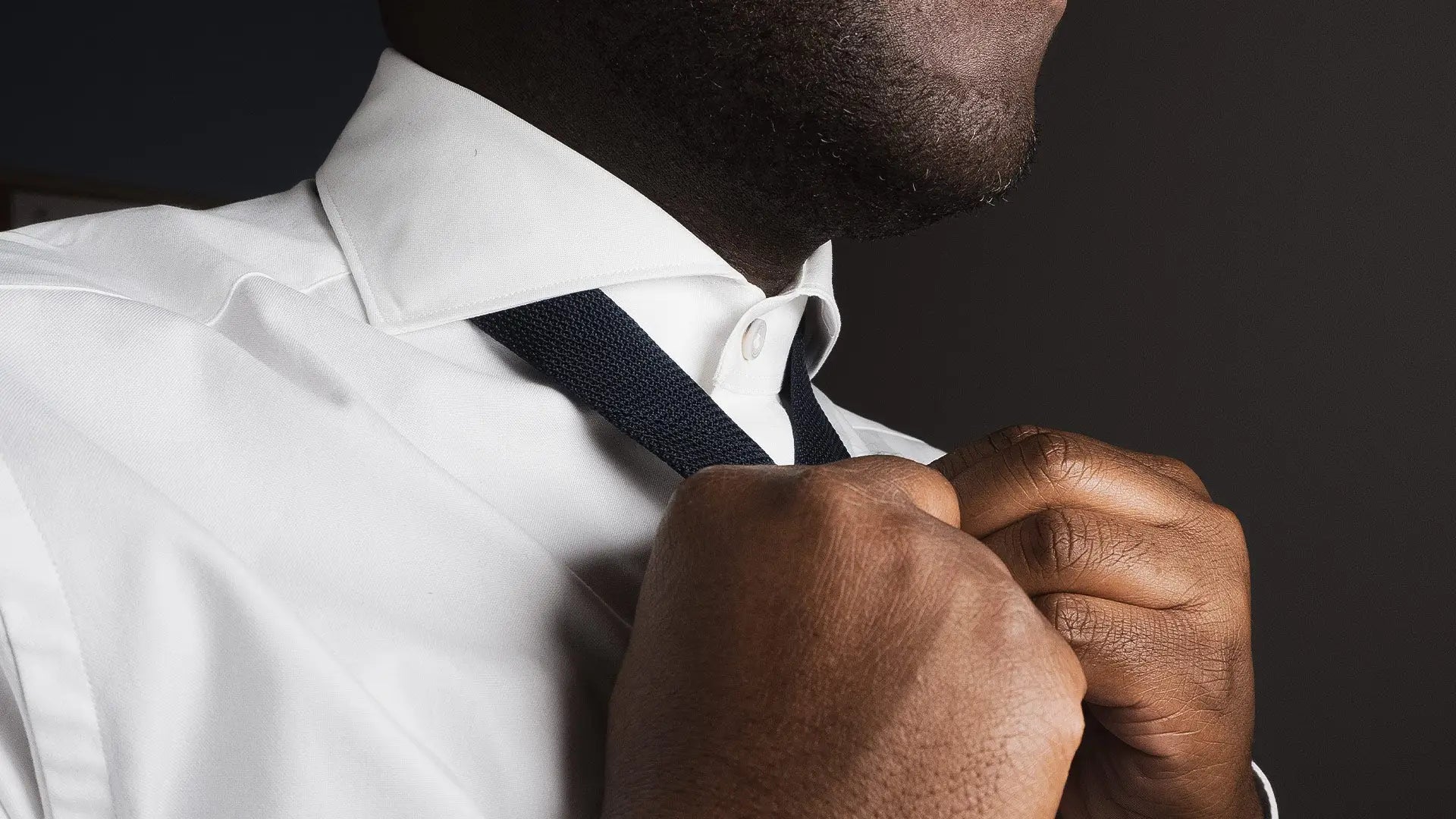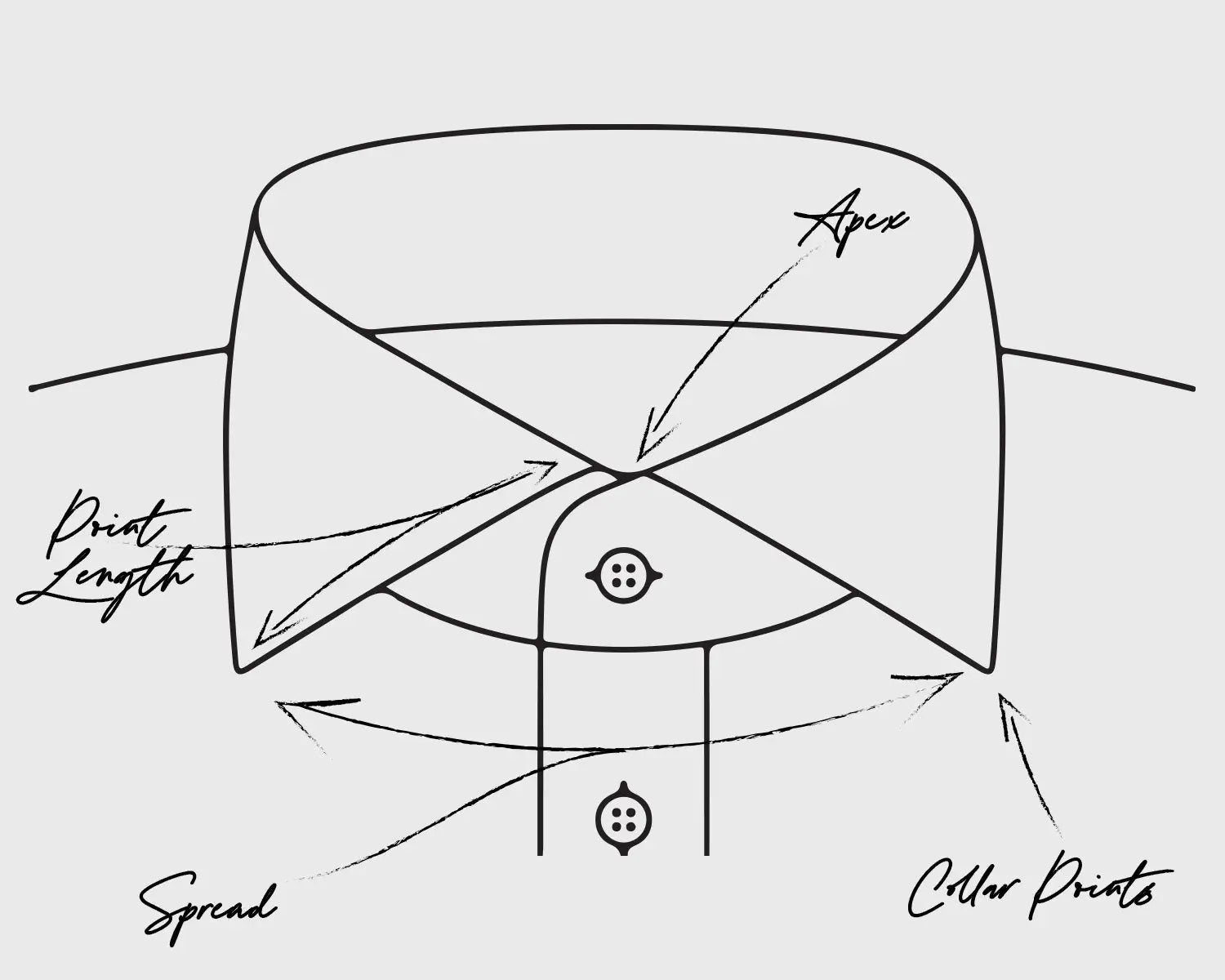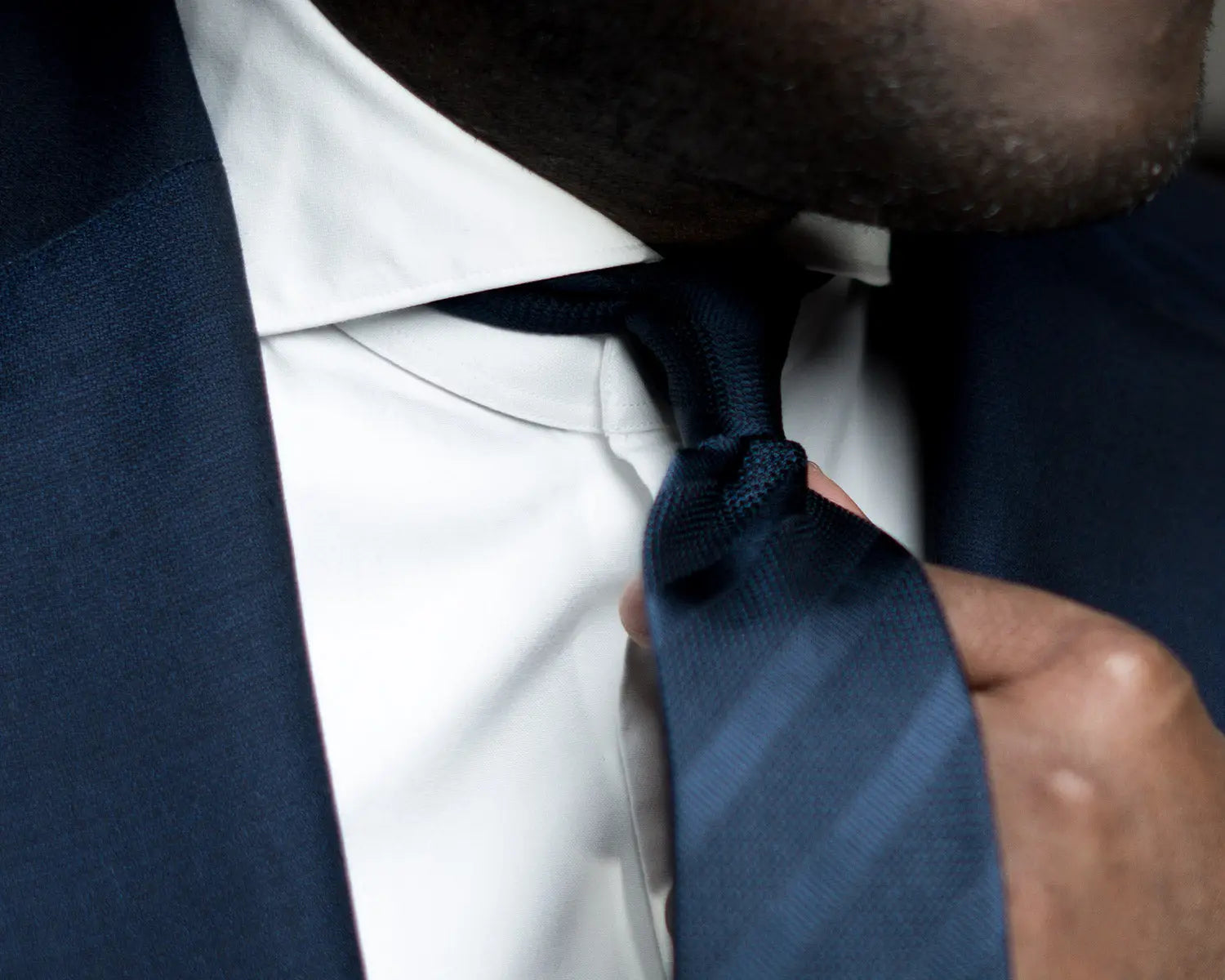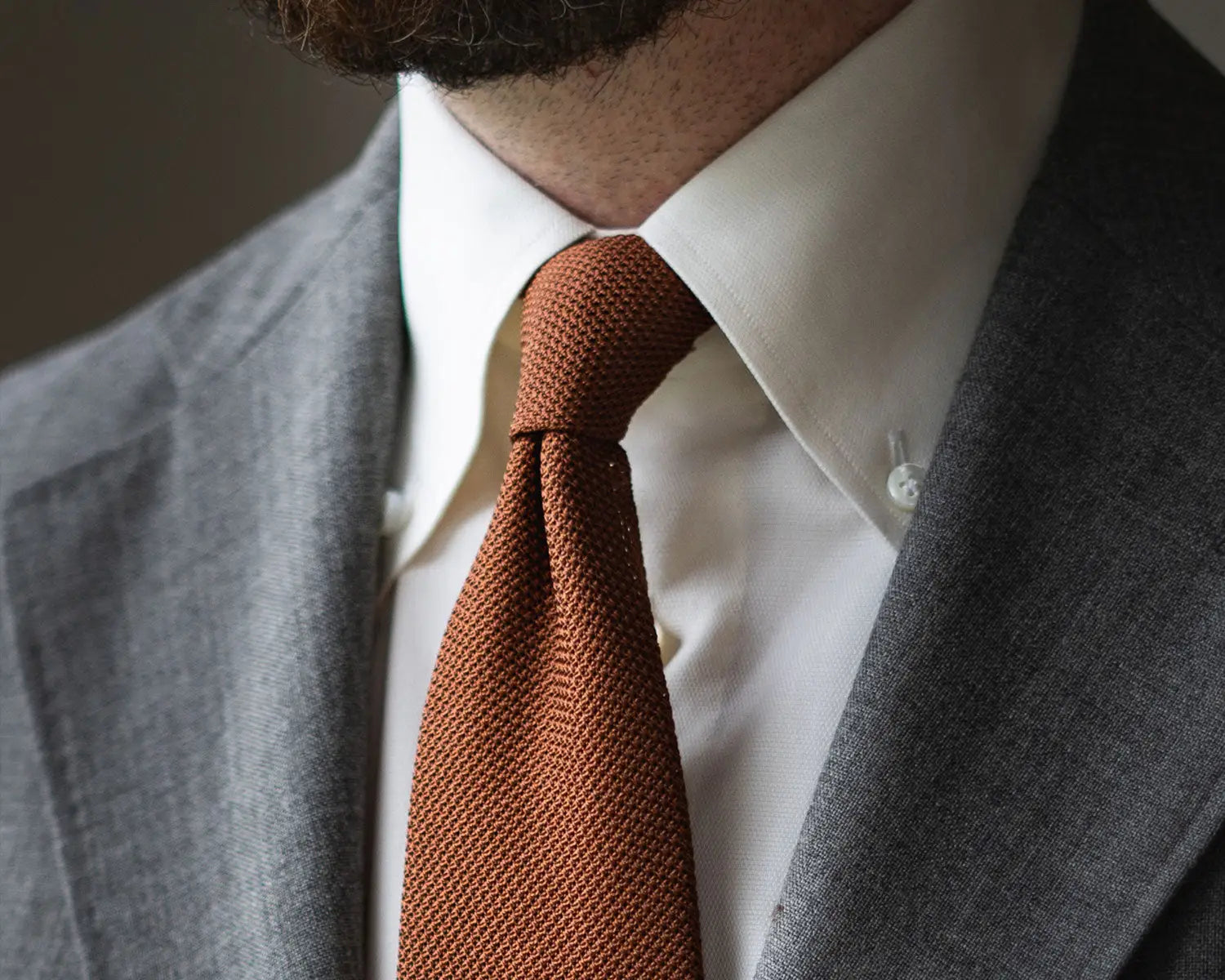
The 3 Shirt Collar Styles that Make Timeless Style Effortless
Discover the secret to effortless and timeless style with our guide on the three shirt collar styles that never go out of fashion. Whether you prefer the classic spread collar, the sophisticated button-down collar.
Image Credit: Aklasu White Cutaway Cotton Dress Shirt
If you have ever been to a made-to-measure tailor shop or visited a website that makes custom shirts, you've likely noticed the plethora of shirt collar styles. You may have even felt overwhelmed when deciding on one amidst choosing between other design details such as fabrics, plackets, cuffs, etc.
When it comes to shirt collar styles, you only need to look at a few—three, to be exact. So, if you did fret before, in the true sense of the Aussie phrase, "No worries." This article's got you covered—or should we say, "Your neck covered?" (Oh boy.)
First, let's introduce some definitions. "Collar points" are the tips of the collar. The term is used to describe the tips relative to the apex of the collar. The "collar apex" is where the collar meets itself, just above where the top button is done up. The “collar spread” refers to the space between the collar points.

Now that we have our bearings, let's talk about three shirt collar styles that make looking refined in your shirt effortless.
The Spread or Semi-Spread: A Classic Collar Style for All Occasions
The first shirt collar style you should consider is the spread or semi-spread. Different tailors call it one name or the other, but there is, in fact, no difference, so in this article, we will use the term "spread." The critical point is that the spread collar style is "spread out," meaning, in a practical sense—its collar tips point far away from each other, usually at about 5" from the collar's apex .

The spread collar is made to lay underneath your suit jacket's lapels, creating smooth, clean lines. According to style blogger, Ian Anderson:
In my opinion, a well-balanced collar/lapel zone involves shirt collar points that are neatly tucked under the lapels of a jacket. This creates smooth, clean lines around the base of your neck and draws attention upwards toward the face rather than to the garment itself.… The most common problem I see is when men wear collar points that are much too small.… The result is an awkward "W" shape at the bottom of the neck rather than sweeping lines.
We couldn't agree more. As Ian points out, there's an elegance to the intersection of a jacket, shirt, and tie—it's the most beautiful focal point in traditional menswear. It’s the secret sauce for a spread collar.
If you are in the market for a shirt with a spread collar, always try it on at the store with a jacket to ensure that the collar lays under the jacket's lapels. If you are going custom, the tailor should be able to do this for you.
With a typical spread collar, 3.5" long collar points should be long enough. The spread collar is perfect for formal events and the office. It works for casual shirts, too, such as those made from chambray (denim's lighter cousin) or linen. It's a combination that can't fail with your jacket and tie.
The Cutaway: The Most Daring of Shirt Collar Styles
Up next, take a look at the cutaway collar. This shirt collar style is characterized by sweeping collar points that look cut 'up and away.' This is the riskiest collar choice. Be careful of anything labelled "extreme cutaway" at all costs. In this case, a little cutaway goes a long way.
It's also the most contemporary and least "classic" of all three of the shirt collar styles we mention, to the point where it may feel a bit avant-garde to some.

Understand that it's well and fine if the cutaway is subtle. The tie blades will be slightly exposed when dressed up with this collar choice. The tie blades, in this case, refer to the portions of the tie not under or a part of the tie knot but on either side of the knot.
Please don't freak out when you see this. It's normal. In fact, it's the hallmark charm of the cutaway. It's a playful wink that adds to the collar's je ne sais quois.
The cutaway collar is appropriate for formal and casual shirts and many occasions. However, use caution if you're tempted to wear it on business occasions. Reach for a spread collar instead. The extra bit of exposed tie is somewhat unusual. You may not want the extra attention it will cause in the boardroom, but it would be fine on a regular day at the office.
The Button-Down: A Collar for More Laid-Back Events
Last but not least is the button-down collar. The button-down collar is, by definition, a collar that buttons at its collar points. In its best form, it's a spread collar with buttons. This puts the collar point spread at about 5". Collar points with smaller spreads will not be covered by your blazer lapels.

Reserve the button-down collar for your more 'casually tailored' outfits. For example, a classic blazer and chino combo or when wearing a suit in a casual material. However, if you amp up the formality of the shirt via fabric, the button-down collar does just fine with a worsted business suit.
There is a certain charm to wearing a jacket and tie with a button-down collar, but it should be noted that the beauty of one is once you take your tie off. The collar never flattens under your jacket lapel and wonderfully frames your face when you undo the top one or two buttons of your shirt.
If you are going custom and want the face-framing effect sans tie without seeing the buttons done up when suited up, there is something you can do. Go to your tailor and get the collar points made long enough so that the buttons will be hidden underneath the lapels of your jacket.
Let's get something out of the way. Other wonderful collar types exist, such as the club and tab collars. This is by no means an attack on those styles.
Consider this article a foundational guide to help you establish the collar mainstays of your shirt wardrobe and avoid the pitfalls of each of the three essential types. From there, you can look into other options.
These collars we covered will be your go-to shirt collar styles for years to come, and now you know how to use each one.
Refine your dress shirt style. Find the perfect fit, the most stylish colours and patterns, and the details you need to know in our article, The Dress Shirt Guide for the Modern Professional.

















